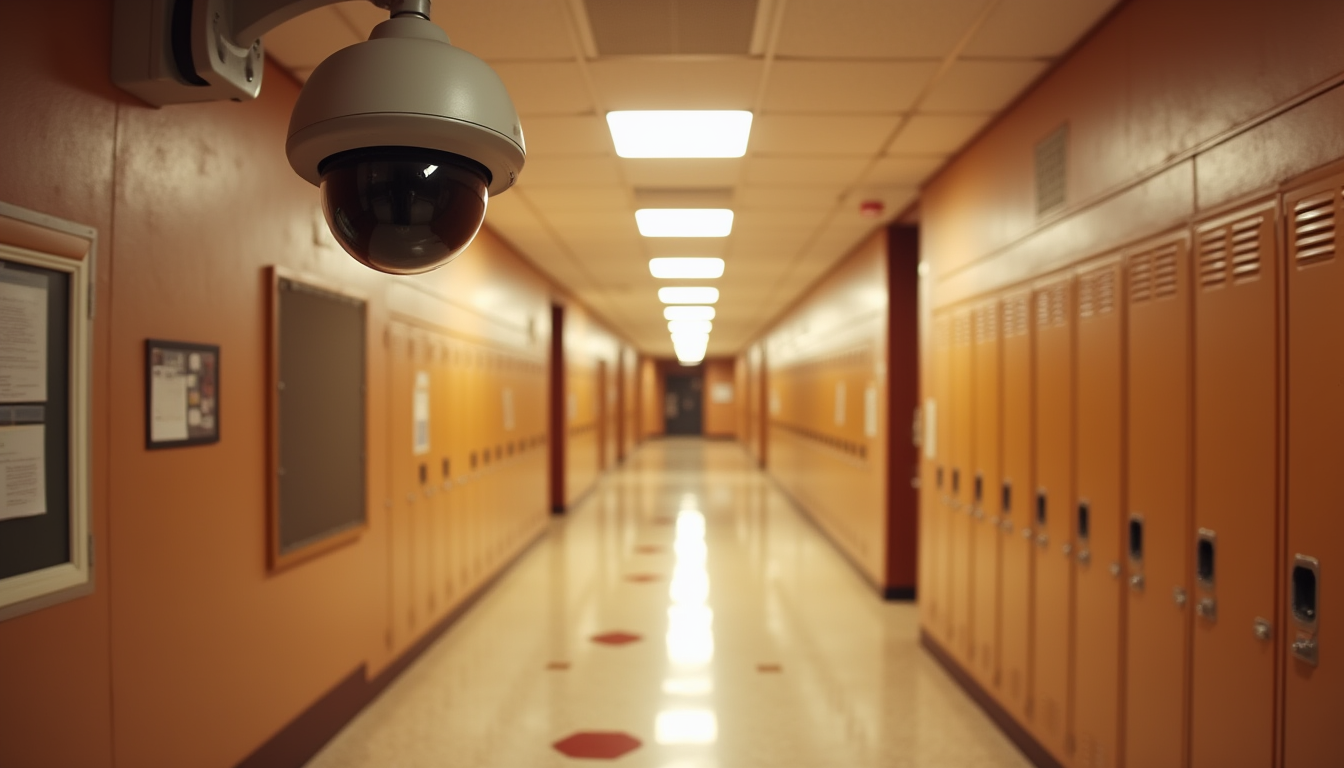In a scene that could be pulled from an episode of Black Mirror, Lawrence High School in Kansas has been thrust into the spotlight—not for academic achievements, but for becoming a testing ground for AI-powered surveillance. The district has implemented software that tracks every student interaction on school-issued devices: from homework to emails, from memes to private chats.
This system doesn’t just flag offensive language or safety concerns—it goes much further. Using machine learning models, the spyware is trained to identify drug and alcohol references, suicidal ideation, violent language, and so-called “anti-social” behavior.
What once was a laptop handed to students for remote learning is now a digital informant.
🔍 Who’s Watching, and What Are They Looking For?
The software deployed—though unnamed officially due to district policy—relies on natural language processing (NLP) and image recognition to flag content. According to reports, these tools are part of a growing industry of “ed-tech surveillance,” with districts across the U.S. investing in AI to mitigate mental health crises, school violence, and drug use.
But the tools are far from perfect. These AI models operate in a context-dependent gray area, often misclassifying benign behavior (such as LGBTQ+ support discussions or sarcastic memes) as risky.
Even worse: flagged reports are automatically sent to administrators—and in some cases, law enforcement—without student consent or parental notification.
“It’s not just about what students do; it’s about what AI *thinks* they might do.”
– Privacy advocate at the Electronic Frontier Foundation
🧪 Tech Meets Trauma: Are These Tools Really Helping?
Administrators argue the AI tools save lives. They cite examples where students who searched for suicide hotlines or wrote concerning messages received intervention within hours.
But digital rights experts are sounding the alarm. According to the Electronic Frontier Foundation, over-surveillance can trigger a chilling effect, making students less likely to seek help or express themselves.
Psychologically, being constantly monitored fosters a culture of mistrust. For marginalized students, particularly Black, Brown, and neurodiverse youth, these systems have historically flagged their behavior more frequently—due to bias baked into the training data.
🛑 The Ethics of “Predictive Policing” in Schools
Let’s be clear: monitoring for safety is a noble goal. But predictive policing through AI in an educational context walks a very fine ethical line.
- Consent is rarely asked.
- Accuracy is questionable.
- Transparency is virtually non-existent.
In the case of Lawrence High, students weren’t informed about the extent of monitoring. Parents discovered the depth of surveillance only after receiving vague, AI-generated “alerts” with minimal context. Some were stunned to learn that AI had misinterpreted song lyrics or poetry as threats.
Is this the future of school safety—or a dystopia in disguise?
📊 A Global Trend, Not a Local Fluke
Lawrence isn’t alone. Similar systems are being tested or deployed in:
- Taiwan, where AI scans student diaries and social posts.
- United Kingdom, where school CCTV is integrated with facial recognition.
- California, where districts partner with AI firms for student risk scores.
This isn’t innovation—it’s normalization.
Further reading:
- Kansas Reflector on AI at Lawrence High
- EFF: Student Privacy at Risk
- Knight First Amendment: Lawsuit Against School Surveillance
FAQs
Q: Are students’ private chats really being scanned?
Yes, all activity on school-issued devices is monitored, even personal messages, photos, and browser activity.
Q: Can parents opt their children out of this AI monitoring?
In most cases, no. Accepting a school device often means automatic consent to surveillance policies buried in fine print.
Q: Are these AI models accurate?
Not always. Studies have shown frequent false positives, particularly for students using slang, sarcasm, or discussing mental health openly.
🧠 Conclusion: From Safety to Suppression?
At MarIA, we love seeing AI empower education—but not when it silences, surveils, and stigmatizes. AI should assist educators, not act as an invisible judge of teenage behavior.
If this is the future of schooling, we must demand safeguards: clear consent, independent audits, bias mitigation, and above all, human oversight. Because turning every laptop into a snitch doesn’t make us safer—it just makes us watched.

 IA que aprende viendo: así es y así aprende RHyME
IA que aprende viendo: así es y así aprende RHyME